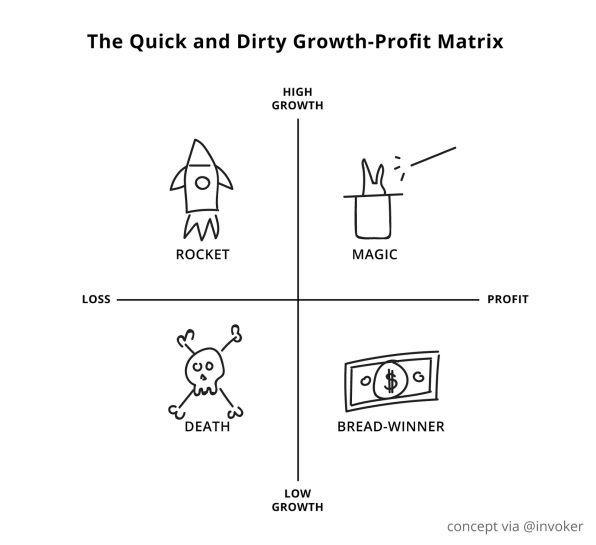Latest news about Bitcoin and all cryptocurrencies. Your daily crypto news habit.

Growth or profit? For tech startups, it’s a million-dollar (and sometimes billion-dollar) question. If you want to expand your business, you generally have to spend money. But when does growth at all costs become a reckless strategy? How do you find the right balance between growth and burn?
The tech world’s last major reckoning with this question was back in March 2014, when Silicon Valley darling Box filed an S-1 indicating it was ready to IPO. For years, Box, which offers cloud-based content-management software to enterprises, had been growing at a fast clip. Investors were willing to overlook the massive amounts of money the company was losing, citing its long-term potential.
But then something unexpected happened. The markets shifted. Investors hunkered down. Whispers went out that Box’s “unit economics” weren’t working. So the company waited nine long months before finally going public. The new attitude: Growth was important, but companies needed to be profitable (or show at least clear path to profitability), too.
So what’s the optimal ratio between these two fundamentals? Ultimately, the answer is still fairly subjective, but there’s an insanely simple chart that can help you sort it out.
MEET THE GROWTH-PROFIT MATRIX
There’s no shortage of methods out there for assessing whether your startup has got the growth-profit balance just right — the real question is what “just right” actually means. The now-famous “Rule of 40,” for example, suggests that a successful software-as-a-service (SaaS) startup’s growth rate plus profit should add up to 40: If you’re growing at 60% rate, you can afford to lose 20%, for instance.
But I’m a highly visual person and started to wonder whether there was a way to express this dynamic graphically. Thinking aboutHootsuite‘s own trajectory, I threw together this super-simple chart:
Now, I realize this is far from scientific, and I also know the underlying concept isn’t new or revolutionary — everyone from Boston Consulting Group to the venture capitalist Tomasz Tunguz have used graphs like this to assess businesses. It’s very basic, but — at a glance — it should let you know if your company is headed in the right direction.
Needless to say, the bottom-left quadrant here is the one you generally don’t want to find yourself in. With few exceptions, you don’t want your startup to be losing money and not really growing. That’s a sure sign that you haven’t mastered product-market fit yet.
The top-left quadrant is where most promising startups start off. It’s definitely where Hootsuite was in its early years. We were losing money, but for all the right reasons: burning through our investments in order to grow fast. In retrospect, this approach let us gain a huge early lead on our competitors in the social-relationship platform space.
As we matured, our priorities shifted. Growth remained important, but investors and analysts became increasingly focused on seeing a path to profitability. So we reduced our spending, tightening belts and asking employees to do more with less. Last year, we achieved a cash-flow positive milestone. There’s no doubt we’re a healthier company now, one built to make money and built to last doing it.
A CONSTANT GAME OF FOUR SQUARE
The idea of just “breaking even” may not sound like a milestone, but if you look at similar-sized companies in our space, it’s actually kind of revolutionary. We’re an eight-year-old business, we’re still growing at a great pace, but we’re actually cash-positive. For most cloud companies — from Zendesk and Marketo to Hubspot and Shopify — the idea of breaking even doesn’t enter the picture until anywhere from two to four years after IPO.
So when it comes to the growth-profit matrix, it’s all about angling yourself into the right quadrant at the right time — knowing it might not be in your best interest to try and stay put there forever. For many startups, this is easy to miss.
If we were to think of these four types of growth-profit ratio as phases, on the other hand, stretched out chronologically, we might be setting ourselves up to fail. I hardly think of our high-growth days as over and done with. While it’s not easy to achieve high profitability and high growth at the same time, there’s one way to break into that elusive top-right quadrant of the chart (andback into it if you’ve had to slow down and refocus for awhile): continuous innovation. By developing new product lines and finding new ways to bring real benefits to customers, it’s possible to sustain high profits while also expanding market share.
In our case, for example, we’ve built new functionality into our core platform, including the ability to buy social media ads. And we’re adding features that make our dashboard useful not just to marketers but to net new audiences — namely, sales and customer service teams. All these steps align with our long-term goal–one that’s predicated on high growth and high profit — of becoming a $10 billion company.
The profit-growth question doesn’t have easy answers. What’s more, you can never stop asking it because the right answer might change according to circumstance. Depending on your industry and the stage of your company, “success” might mean a very different ratio than it does for a different startup in a different phase. Ultimately, every investor cares primarily about one thing: how much cash flow your company generates over its lifetime. You may not be profitable now, but there needs to be a clear route to profitability, ideally in your near future — no matter how groundbreaking your business idea may be.
This article originally appeared on Fast Company and is reprinted with permission.
More From Fast Company:
- Making The Case For Hiring Less And Growing Slowly
- Why This CEO Appointed An Employee To Change Dumb Company Rules
- Three Myths About Successful Founders That Just Won’t Die
The Quick and Dirty Growth-Profit Matrix was originally published in Hacker Noon on Medium, where people are continuing the conversation by highlighting and responding to this story.
Disclaimer
The views and opinions expressed in this article are solely those of the authors and do not reflect the views of Bitcoin Insider. Every investment and trading move involves risk - this is especially true for cryptocurrencies given their volatility. We strongly advise our readers to conduct their own research when making a decision.
